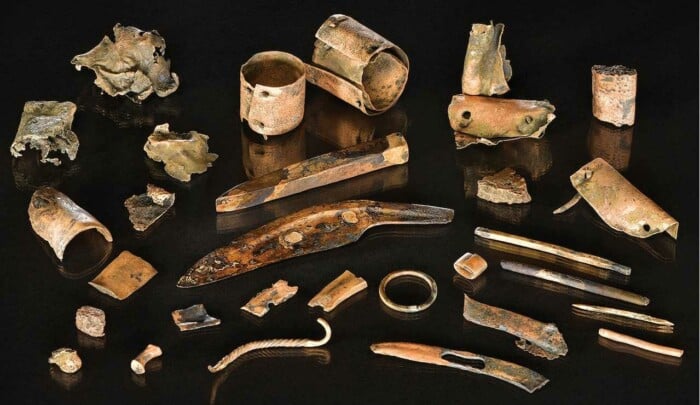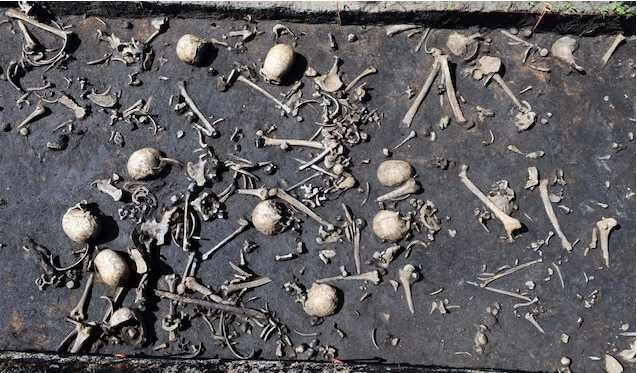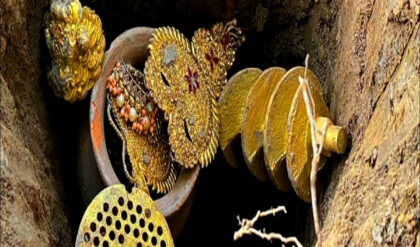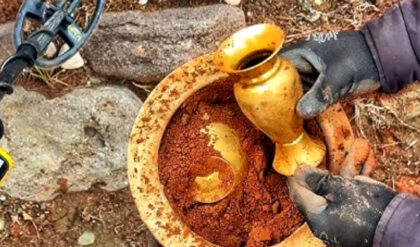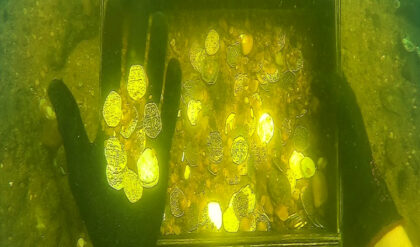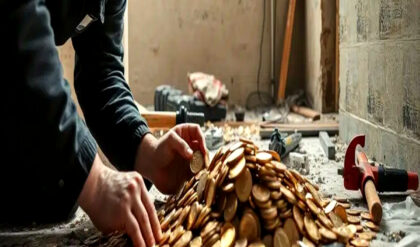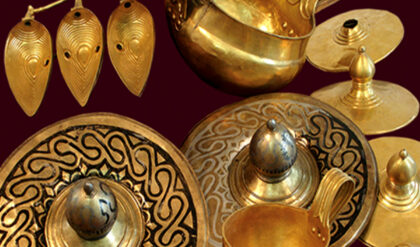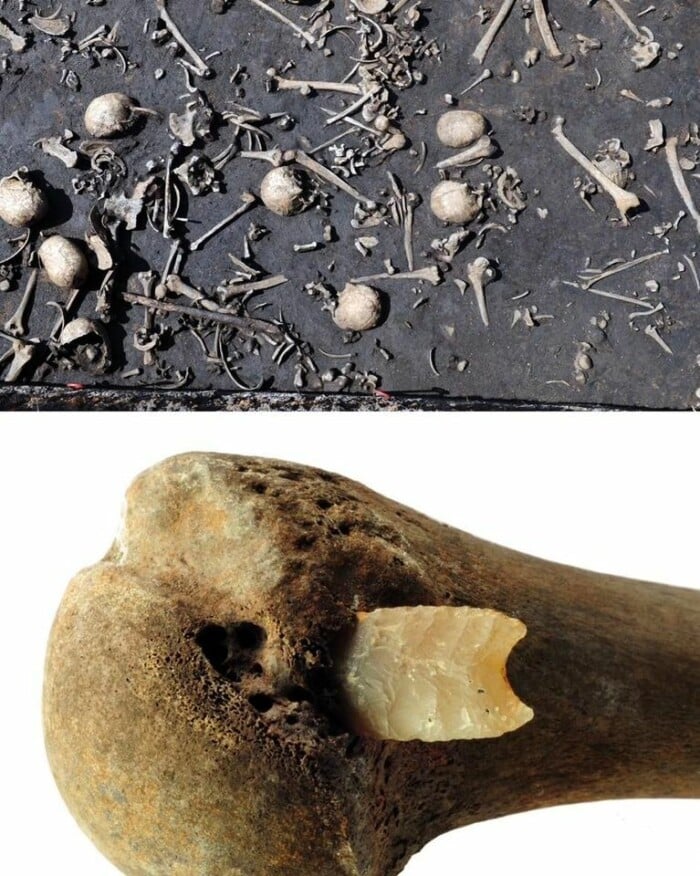
The Tollense Valley is a beautiful and tranquil place in northern Germany, where nature lovers can enjoy the sight of green fields, dense forests, and clear lakes. But this idyllic landscape hides a dark and gruesome secret. Beneath the soil and the water lies the evidence of a massive and brutal battle that took place more than 3,000 years ago, during the late Bronze Age. This battle is the oldest known in European history, and one of the most violent and mysterious in the world.
A Chance Discovery
The battle was discovered by accident in 1996, when a local man who was interested in nature conservation stumbled upon a human bone with an arrowhead stuck in it on the shore of the Tollense River. He alerted the authorities, who sent archaeologists to investigate. What they found was astonishing: a vast and scattered collection of human and animal bones, weapons, and personal belongings that spanned several kilometers along the river. The bones belonged to at least 140 individuals, mostly young men, but also some women and children. The weapons included swords, spears, axes, clubs, and bows and arrows made of bronze, wood, and flint. The personal items included jewelry, tools, and containers that indicated some of the fighters came from faraway lands.
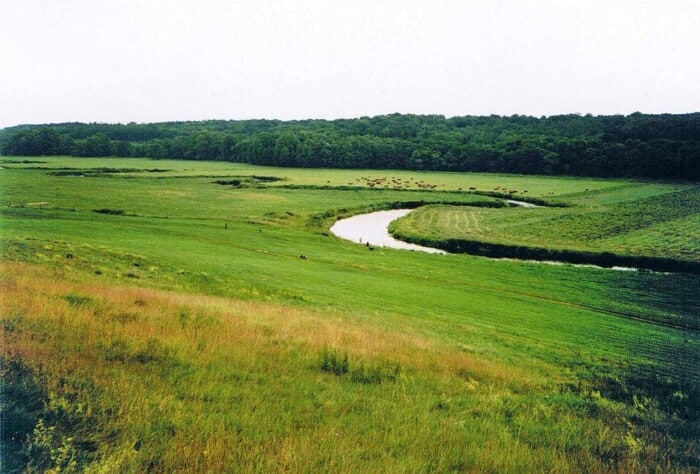
A Clash of Cultures
The battle is dated to around 1200 BCE, a time when Central Europe was undergoing significant social and political changes. The Bronze Age was a period of technological innovation and trade expansion, but also of increasing competition and conflict over resources and territories. The Tollense Valley may have been a strategic location that connected different regions and cultures, such as the Nordic Bronze Age culture in Scandinavia, the Urnfield culture in southern Germany and eastern France, and the Lusatian culture in central and eastern Europe. Some of these cultures may have been involved in the battle, either as allies or enemies.
According to Thomas Terberger, an archaeologist at the University of Göttingen in Germany who helped launch the excavation at Tollense, the battle was not a local affair. “We have people from different regions with different genetic backgrounds who died there,” he says. “This is not a bunch of local idiots killing each other. This is a supra-regional event.”
Terberger and his team have analyzed the isotopes in the teeth of some of the skeletons to determine where they grew up. They found that some of them came from southern Germany or even farther away. They also examined the DNA of some of the bones and found that they belonged to different genetic groups that are typical for northern and central Europe.

A Mystery Unsolved
The exact cause and outcome of the battle are still unknown, but archaeologists have proposed several hypotheses based on the evidence. One possibility is that the battle was part of a larger war or raid between rival groups or kingdoms. Another possibility is that the battle was a result of a social uprising or rebellion against an oppressive elite or ruler. A third possibility is that the battle was a ritual or ceremonial event that involved human sacrifice or gladiatorial combat. Whatever the case, the battle was a violent and traumatic event that left a lasting mark on the landscape and the people who fought there.
One of the most intriguing clues to the nature of the battle is a group of 31 bronze objects that were found in river sediment about 1,000 feet away from an ancient causeway believed to be the battle’s starting point. The objects include a bronze awl, a chisel and knife, bronze fragments, and a small, cylindrical bronze box designed to be worn on a belt. Human remains were also found in the sediment deposit, supporting the idea that the area was part of the Bronze-Age battlefield.
Among the stash are also three bronze cylinders that may have been fittings for bags or boxes designed to hold personal gear—unusual objects that until now have only been discovered hundreds of miles away in southern Germany and eastern France. “This was puzzling for us,” says Terberger. “These are very rare objects that you don’t find every day.” He suggests that these objects may have belonged to someone who had a special role or status in the battle, such as a leader or a messenger.
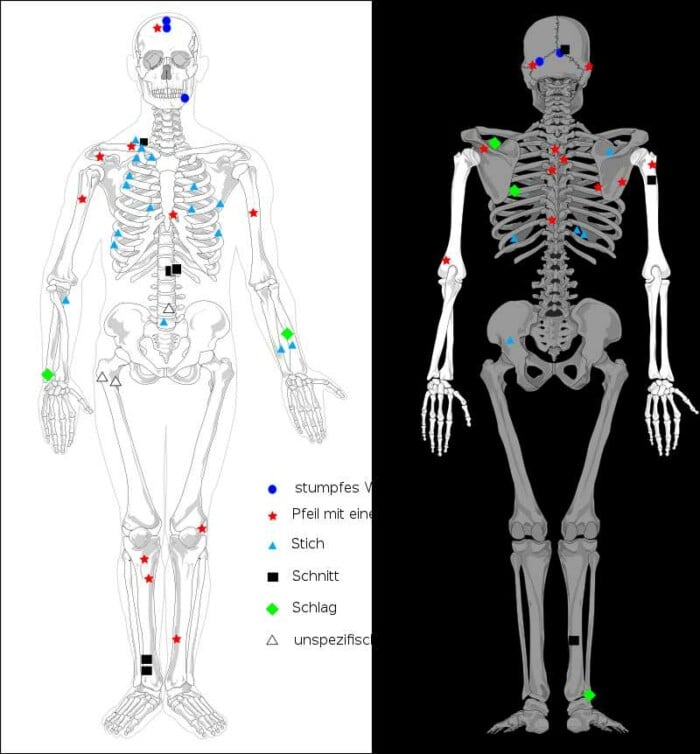
A Unique Source of Information
The Tollense Valley battlefield is a unique and valuable source of information about the Bronze Age in Europe. It provides insights into the warfare, weaponry, mobility, identity, and lifestyle of the people who lived in this period. It also challenges some of the assumptions and stereotypes about the Bronze Age as a peaceful or primitive time. The Tollense Valley battlefield shows that the Bronze Age was a complex and dynamic era that witnessed both cooperation and conflict among different cultures and societies.
As Detlef Jantzen, chief archaeologist at Mecklenburg-Vorpommern’s State Office for Culture and Historic Preservation, says: “We have been searching for this type of site for a long time. This is the first time we can prove that something like a war existed in prehistoric Central Europe.”
